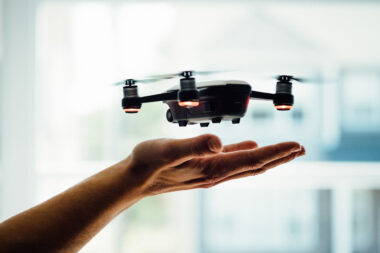Introduction
Electric propulsion systems for aircraft represent a revolutionary shift in the aviation industry, promising increased efficiency, reduced environmental impact, and novel design possibilities. Unlike traditional aircraft propulsion systems that rely on internal combustion engines, electric propulsion systems leverage electric power generated by batteries or other sources to drive electric motors. This paradigm shift opens up new opportunities for cleaner, quieter, and more sustainable air travel.
Electric propulsion systems enhancing the aircraft
- Environmental Sustainability:
- Reduced Emissions: Electric propulsion systems eliminate direct emissions during operation, contributing to cleaner air and a reduced environmental footprint.
- Lower Carbon Footprint: The use of renewable energy sources for charging further decreases the overall carbon footprint of electric aircraft.
- Operational Efficiency:
- Higher Efficiency: Electric motors are inherently more efficient than traditional internal combustion engines, resulting in improved energy conversion and reduced energy waste.
- Responsive Controls: Electric propulsion systems offer precise control over thrust, allowing for rapid adjustments and optimizing performance during various flight phases.
- Reduced noise levels:
- Quieter Operation: Electric aircraft produce significantly lower noise levels compared to traditional jet engines, enhancing the passenger experience and reducing noise pollution around airports.
- Innovative Aircraft Design:
- Distributed Propulsion: Electric propulsion enables unconventional aircraft designs, such as distributed propulsion systems with multiple small electric motors strategically placed on the airframe.
- Enhanced Aerodynamics: With more design flexibility, electric aircraft can incorporate aerodynamic improvements, potentially leading to more efficient flight.
- Lower operating costs:
- Reduced Maintenance: Electric propulsion systems typically have fewer moving parts, resulting in lower maintenance requirements and operational costs over the long term.
- Energy Efficiency: Electric aircraft enjoy lower energy costs, especially when using renewable energy sources.
- Extended Range and Endurance:
- Advancements in Battery Technology: Ongoing developments in battery technology contribute to increased energy density, providing electric aircraft with longer ranges and extended endurance.
- In-Flight Charging: Research into in-flight charging technologies could further extend the range of electric aircraft.
- Adaptability to Urban Air Mobility (UAM):
- Vertical Takeoff and Landing (VTOL): Electric propulsion systems are well-suited for VTOL capabilities, supporting the development of urban air mobility vehicles that can take off and land vertically in crowded urban environments.
- Sustainable Aviation Goals:
- Industry Alignment: The adoption of electric propulsion aligns with global initiatives for sustainable aviation, supporting the aviation industry’s commitment to reducing its environmental impact.
- Regulatory Support: Governments and aviation authorities may incentivize the use of electric propulsion through regulatory frameworks promoting sustainable aviation.
- Technological Innovation:
- Digital Connectivity: Electric aircraft are often equipped with advanced avionics and digital systems, contributing to enhanced connectivity, data collection, and communication capabilities.
- Integration of Artificial Intelligence (AI): AI algorithms may be employed in control systems, optimizing flight parameters and improving overall efficiency.
- Future Technological Advancements:
- Integration with Emerging Technologies: Electric propulsion systems can be integrated with emerging technologies such as hydrogen fuel cells, hybrid-electric systems, and advanced materials to further enhance performance.
Materials used in the making of electric propulsion systems
- Electric Motors:
- Permanent magnet synchronous motors (PMSM) or brushless DC motors are commonly used for their efficiency and power density.
- Batteries:
- Lithium-ion batteries are prevalent and chosen for their high energy density, lightweight design, and rechargeable capabilities.
- Power Electronics:
- Components such as insulated gate bipolar transistors (IGBTs) and power converters are used in the power electronics subsystem.
- Propellers or fans:
- Lightweight and durable materials like composite materials, aluminum, or titanium are used for propellers or fan blades.
- Thermal Management Materials:
- Heat sinks, cooling fluids, and thermal insulating materials are employed for effective thermal management.
- Structural Components:
- Aircraft-grade materials like aluminum alloys, carbon fiber composites, and titanium are used for the structural components of the electric propulsion system.
- Wiring and connectors:
- High-quality, lightweight wiring and connectors made of materials like copper and aluminum alloys are used for electrical connections.
- Control System Components:
- Microcontrollers, sensors, and feedback devices are integral components of the control systems, often made with silicon-based semiconductor materials.
- Testing Equipment:
- Sophisticated testing equipment, including sensors, data acquisition systems, and simulation tools, is used to validate and optimize the electric propulsion system.
The fabrication of electric propulsion systems demands a multidisciplinary approach, combining expertise in electrical engineering, materials science, aerospace engineering, and control systems. Advances in materials and technology continue to drive innovation in the development of more efficient and sustainable electric propulsion systems for aircraft.
Algorithms used
- Motor Control Algorithms:
- Field-Oriented Control (FOC): FOC algorithms optimize the performance of electric motors by aligning the stator current with the rotor magnetic field, improving efficiency and control.
- Direct Torque Control (DTC): DTC algorithms directly control the torque and flux of the motor, providing precise control without the need for complex transformations.
- Battery Management System (BMS) Algorithms:
- State of Charge (SOC) Estimation: SOC algorithms estimate the remaining energy in the battery, helping optimize energy usage and prevent overcharging or deep discharging.
- State of Health (SOH) Monitoring: SOH algorithms assess the overall health and degradation of the battery over time.
- Energy Management Algorithms:
- Optimal Power Flow (OPF): OPF algorithms manage the distribution of electrical power among various components, such as the motor and auxiliary systems, to maximize overall efficiency.
- Load Shedding Algorithms: In cases of power constraints, load shedding algorithms prioritize critical systems to ensure the aircraft’s essential functions are maintained.
- Propulsion Control Algorithms:
- Thrust Vectoring: Algorithms for thrust vectoring adjust the direction of the thrust, enhancing maneuverability and control during flight.
- Variable Pitch Propeller Control: Algorithms control the pitch of variable-pitch propellers to optimize efficiency during different flight conditions.
- Regenerative Braking Algorithms:
- Energy Recovery: Algorithms for regenerative braking capture and store energy during descent or braking phases, contributing to overall energy efficiency.
- Flight Control Algorithms:
- Flight Envelope Protection: Algorithms ensure the aircraft operates within safe flight envelopes, preventing unintended maneuvers or exceeding design limits.
- Autopilot and Stability Control: Advanced algorithms assist in autopilot functions and stability control, maintaining safe and stable flight.
- Charging and In-Flight Charging Algorithms:
- Charging Rate Control: Algorithms manage the rate of charging to optimize battery life and prevent overheating.
- In-Flight Charging Scheduling: Algorithms determine optimal times for in-flight charging, considering flight phases and energy requirements.
- Health Monitoring and Predictive Maintenance Algorithms:
- Fault Detection and Diagnostics: Algorithms monitor system components for faults and anomalies, facilitating early detection and preventive maintenance.
- Predictive Maintenance: Machine learning algorithms analyze historical data to predict when components might require maintenance, minimizing downtime and maximizing reliability.
- Energy-Optimized Routing Algorithms:
- Flight Path Planning: Algorithms consider energy efficiency and battery constraints when planning flight paths, optimizing routes to conserve energy.
- Real-Time Monitoring and Control Algorithms:
- Closed-Loop Control: Real-time feedback loops and control algorithms continuously adjust parameters to optimize performance during flight.
- Adaptive Control: Adaptive algorithms adjust system parameters in response to changing conditions, ensuring optimal performance.
Working of electric propulsion systems
- Power Generation:
- Electric propulsion systems rely on advanced batteries, fuel cells, or hybrid systems to generate electrical power. These power sources provide a stable and reliable energy supply for the system.
- Power Distribution:
- The generated electrical power is then distributed to the electric motor through a network of power electronics, including inverters and converters. These components manage the flow of electricity and ensure it meets the motor’s requirements.
- Electric motor operation:
- The electric motor, typically a brushless DC motor or a permanent magnet synchronous motor (PMSM), converts electrical energy into mechanical energy.
- The flow of electric current through coils produces a rotating magnetic field, inducing motion in the rotor.
- Propulsion Mechanism:
- The rotating rotor of the electric motor is connected to the aircraft’s propeller or fan system.
- The generated mechanical thrust from the motor is transferred to the propeller, resulting in forward propulsion.
- Variable Thrust and Control:
- Electric propulsion systems offer precise control of thrust through variations in the electric current supplied to the motor.
- Variable-pitch propellers or distributed propulsion systems allow for enhanced control and efficiency.
- Real-Time Monitoring and Control Systems:
- Sophisticated control systems continuously monitor various parameters, such as motor speed, temperature, and battery status.
- These control systems use feedback loops and algorithms to optimize the performance of the electric propulsion system.
- Environmental Considerations:
- Electric propulsion systems contribute to a reduction in environmental impact by eliminating or minimizing emissions during operation.
- Quieter operation compared to traditional engines also reduces noise pollution.
- Thermal Management:
- As electric motors and batteries generate heat during operation, thermal management systems, such as cooling solutions, ensure the components operate within their optimal temperature range.
- Integration with Aircraft Systems:
- Electric propulsion systems are seamlessly integrated into the overall aircraft design, considering weight distribution, aerodynamics, and safety.
- Charging and Energy Storage:
- In the case of battery-powered systems, recharging is necessary between flights. Ground-based charging infrastructure or innovative in-flight charging technologies may be employed.
- Flight Dynamics:
- Pilots have the ability to control the electric propulsion system during flight, adjusting thrust levels and optimizing performance based on operational requirements.
- Safety Protocols:
- Electric propulsion systems incorporate safety features, including fail-safe mechanisms, to ensure reliable and secure operation.
Power generation for electric propulsion systems
- Battery Systems:
- Cell Chemistry: Lithium-polymer and lithium-cobalt chemistries are commonly used due to their high energy density and lightweight properties.
- Battery Management System (BMS): BMS algorithms manage individual cells and monitor temperature, voltage, and current, ensuring optimal performance and safety.
- Energy Density: Ongoing research focuses on improving the energy density of batteries, enhancing the overall performance of electric aircraft.
- Hybrid Systems:
- Range Extender: The internal combustion engine in a hybrid system acts as a range extender, typically running on conventional fuels. It generates electricity to charge the batteries during flight.
- Control Algorithms: Algorithms manage the transition between electric and combustion modes, optimizing efficiency and performance.
- Fuel Cells:
- Proton Exchange Membrane (PEM) Fuel Cells: Commonly used in aviation, PEM fuel cells produce electricity through the electrochemical reaction between hydrogen and oxygen.
- Hydrogen Storage: Challenges include efficient hydrogen storage solutions, such as high-pressure tanks or advanced materials for solid-state storage.
- Solar Panels:
- Photovoltaic Cells: Solar panels incorporate photovoltaic cells, typically made from crystalline silicon or other advanced materials.
- Power output: Aspects like sunlight intensity, angle of incidence, and the effectiveness of photovoltaic cells all have an impact on solar power output.
- Integrated Systems: Aircraft may utilize power electronics to efficiently convert and manage solar-generated power.
- In-Flight Charging:
- Wireless Power Transfer (WPT): WPT technologies, such as resonant inductive coupling, enable wireless charging during flight.
- Efficiency Considerations: The efficiency of in-flight charging systems, including transmitter and receiver efficiency, is crucial for practical implementation.
These technical details highlight the intricacies of electric power generation in aircraft propulsion systems, showcasing the advancements and challenges associated with each method. Ongoing research and development in materials, energy storage, and power electronics continue to push the boundaries of electric aviation technology.
Conclusion
Electric propulsion systems represent a paradigm shift in aviation, offering a cleaner, more efficient, and technologically advanced alternative to traditional aircraft engines. The integration of sophisticated algorithms for motor control, battery management, energy optimization, and flight control ensures precise and responsive operation. As ongoing research and development address challenges and push the boundaries of technology, the future of electric propulsion holds promise for sustainable air travel, reduced environmental impact, and increased efficiency in the aviation industry.



